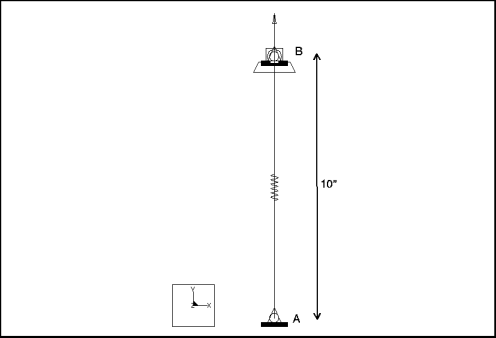
|
Analysis Type:
|
Dynamic Time Response
|
|
Model Type:
|
3D
|
|
Comparison:
|
ANSYS No. 74
|
|
Reference:
|
Thomson, W.T. Vibration Theory and Applications. NJ: Prentice-Hall, Inc. 2nd printing, 1965. p. 99, Article 4.1.
|
|
Description:
|
A mass-spring system is subjected to an impact load, and thereafter undergoes free vibration. Determine the deflection at time t = 0.1 sec for a damped and undamped system.
|

Element Type: | mass (1), spring (1) | ||
Units: | IPS | ||
Dimensions: | spring length: 10 (arbitrary) | ||
Mass Properties: | |||
M: 0.5 | Mxx: 0 | Mxy: 0 | Mxz: 0 |
Myy: 0 | Myz: 0 | Mzz: 0 | |
Spring Properties: (extensional stiffness) | |||
Kxx: 200 | Kxy: 0 | Kxz: 0 | |
Kyy: 0 | Kyz: 0 | Kzz: 0 | |
Constraints: | placed on point A: fixed in all DOF placed on point B: fixed in all DOF except TransY | ||
Loads: | placed on point B: FY = 10 Distribution: N/A Spatial Variation: N/A | ||
Theory | ANSYS | Structure1 | % Difference | |
Max Deflection @ t = 0.1 (a=undamped) | 0.909297 | 0.90693 | 0.909297 | 0.0% |
Max Deflection @ t = 0.1 (a=damped, damping=70%) | 0.3418 | 0.34252 | 0.3418 | 0.0% |
Convergence %: 0.0% on Frequency | Max P: N/A | No. Equations: 1 | ||